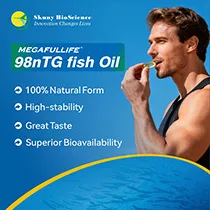Consumer Study: EU Consumers Still Lack Motivation in Making Healthful Choices

Most people can use the different nutrition labelling schemes available to identify more healthful (less calorific) choices, but they lack the motivation to factor nutrition information into their purchasing decisions. Price, taste and time constraints are key aspects to consider for more effective nutrition labelling.
10 Aug 2012 --- In the face of continuing high rates of obesity across Europe, can nutrition labelling help consumers manage their dietary intakes to achieve a healthy body weight? To answer this question, EUFIC reviewed the scientific evidence published between 2007 and March 2012. The conclusion: most people can use the different nutrition labelling schemes available to identify more healthful (less calorific) choices, but they lack the motivation to factor nutrition information into their purchasing decisions. Price, taste and time constraints are key aspects to consider for more effective nutrition labelling.
The researchers screened two public online libraries, Pubmed and Social Sciences Research Network, for scientific publications related to nutrition labelling and obesity. Studies that most closely matched the topic mainly dealt with consumers’ understanding and use of nutrition labelling, as well as its impact on purchasing decisions. Settings considered included retail stores and out-of-home eating. Additionally, the review briefly touched upon studies that modelled the potential impact of nutrition labelling on dietary intakes.
The key finding was that to date no scientific evidence exists from Europe to indicate an impact of nutrition labelling – positive or negative – on body weight. Most studies included have assessed if and how consumers understand and use nutrition labels. When prompted to identify the most healthful option from a given choice set of foods, the majority of respondents was able to do so regardless of the nutrition labelling system. Modelling studies confirm that choosing diets with a more healthful profile will result in better population health, while bringing about substantial reductions in health care costs.
However, in real-life situations (e.g. supermarkets, cafeterias), price, taste, and brand were far more important drivers for buying a specific food or drink product. Shopping under time pressure, a common phenomenon nowadays, seemed to further compromise the impact nutrition labels could possibly have.
Potential ways forward include increasing people’s motivation to read nutrition labels. This may be achieved by shifting consumers’ mind-set towards a health focus. For those with a hedonic focus on foods or who struggle with technical nutrition tables, health claims and health logos may be alternative communication formats. Providing nutrition information on all products, in a consistent fashion, is likely to aid consumer acceptance and use. Whether this eventually will help prevent obesity, future research must show. One thing is certain: Studies into the potential impact of nutrition labelling on obesity need to include body weight measurements if they want to establish causal relationships.
For more information, see
Storcksdieck genannt Bonsmann S, Wills JM. Nutrition labelling to prevent obesity - Reviewing the evidence from Europe. Curr Obes Rep. 2012;1(3):134-140.












